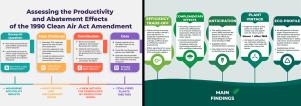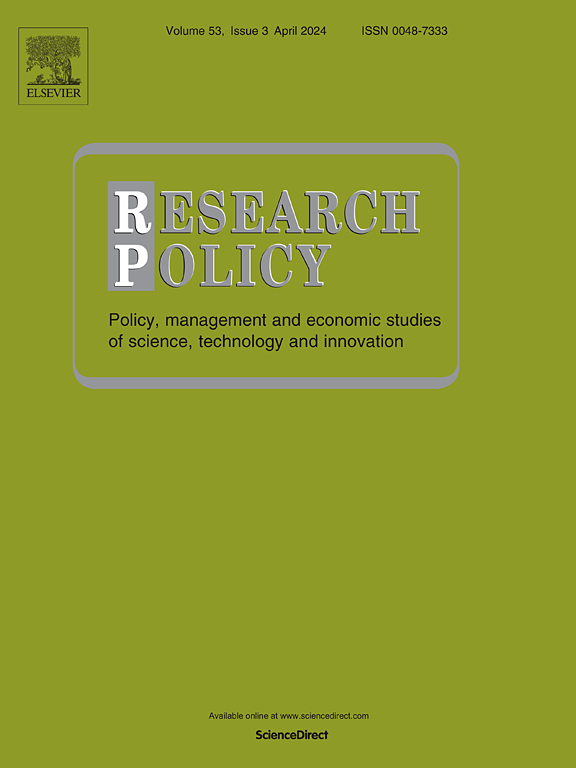Assessing the productivity and abatement effects of the 1990 Clean Air Act Amendment
IF 8
1区 管理学
Q1 MANAGEMENT
引用次数: 0
Abstract
How does environmental regulation affect productivity and emissions? Measuring these disparate effects is important for effective eco-policy design, but these channels have been difficult to disentangle. We leverage a new methodology to model the joint production of output and multiple pollutants at the plant level. Exploiting variation from the 1990 Clean Air Act Amendment, our novel and versatile Generalized By-production approach allows us to conduct the first evaluation of the policy that explicitly models efficiencies of output (electricity), as well as efficiencies of NOx and SO2 reductions for coal-fired power plants. Our analysis highlights not only the production-pollution trade-off plants face, but also complementary effects of pollution abatement across pollutants. We show that the 1990 announcement of the policy induced anticipatory responses despite the regulation not requiring strict compliance until 1995. Plants forced to comply with the policy’s Phase I SO2 reductions (i.e. assigned nonattainment designation), on average, suffered greater efficiency losses in productivity and showed larger improvements in both pollutant reductions, relative to lightly regulated (attainment) plants. Regulation-induced impacts vary by plant vintage, state environmental quality, and eco-friendly behaviors. Crucially, improvements in pollutant reductions outweigh the countervailing contractions in electricity generation.

评估 1990 年《清洁空气法修正案》的生产力和减排效果
环境监管如何影响生产力和排放?衡量这些不同的影响对于有效的生态政策设计非常重要,但这些渠道一直难以区分。我们利用一种新方法,在工厂层面建立产出和多种污染物联合生产的模型。利用 1990 年《清洁空气法案修正案》的变异,我们采用了新颖、多用途的 "广义副产品 "方法,首次对燃煤电厂的产出效率(电力)以及氮氧化物和二氧化硫减排效率进行了明确的政策评估。我们的分析不仅强调了发电厂面临的生产与污染之间的权衡,还强调了不同污染物之间污染减排的互补效应。我们的分析表明,尽管该法规直到 1995 年才要求严格遵守,但 1990 年公布的政策诱发了预期反应。被迫遵守该政策第一阶段二氧化硫减排要求的工厂(即被指定为非达标工厂),平均而言,相对于轻度监管(达标)工厂,在生产效率方面遭受了更大的损失,在两种污染物的减排方面都有更大的改善。监管引发的影响因工厂年份、州环境质量和生态友好行为而异。最重要的是,污染物减排的改善超过了发电量的逆势收缩。
本文章由计算机程序翻译,如有差异,请以英文原文为准。
求助全文
约1分钟内获得全文
求助全文
来源期刊

Research Policy
MANAGEMENT-
CiteScore
12.80
自引率
6.90%
发文量
182
期刊介绍:
Research Policy (RP) articles explore the interaction between innovation, technology, or research, and economic, social, political, and organizational processes, both empirically and theoretically. All RP papers are expected to provide insights with implications for policy or management.
Research Policy (RP) is a multidisciplinary journal focused on analyzing, understanding, and effectively addressing the challenges posed by innovation, technology, R&D, and science. This includes activities related to knowledge creation, diffusion, acquisition, and exploitation in the form of new or improved products, processes, or services, across economic, policy, management, organizational, and environmental dimensions.
 求助内容:
求助内容: 应助结果提醒方式:
应助结果提醒方式:


